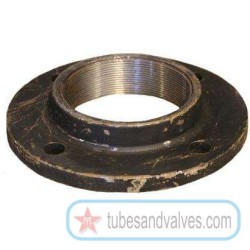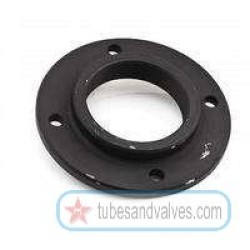Threaded Flange
A threaded flange is a type of flange that is used to join pipes and other equipment, such as pipes, valves, pumps and fittings. A threaded flange is one of the most commonly used connection methods due to its simple construction and strong connection. Threaded flange are used in a variety of industries, such as oil and gas, petrochemical and water treatment plants, shipbuilding and other marine applications. The threaded flange design is known for its strength, durability, and operational flexibility. In addition, threaded flanges are relatively inexpensive when compared to other types of flanges.
Function
Threaded flanges are used to join pipes and equipment with a thread. The design of the thread flange creates a strong connection, so the equipment will not easily separate or become loose. The flange is normally placed between two pieces of equipment and threaded together to form a tight seal. The threading on the flange can either be internal or external, depending on the application. Threads in internal and external flanges can be straight or tapered, with the type of threading being chosen to meet the requirements of the application. Threaded flanges are designed to handle a specific range of pressure and temperature, making it important to select the right type of flange for your application.
Materials
Threaded flanges are usually made from a variety of materials, including stainless steel, carbon steel, brass, and other metals. Each material is best suited for different applications and environments. For instance, stainless steel is a popular choice for many applications due to its strength and durability, while brass is often used in non-corrosive environments. In addition, there are also a variety of coatings, such as paint and galvanization, that can be used for additional protection.
Installation
Threaded flanges are relatively easy to install when compared to other types of flanges. Since the flanges are threaded, all that is required is to thread the flanges together. However, it is important to use the correct type of wrench or tool to tighten the flange properly. The bolts should also be loosened and the parts checked for proper alignment before being tightened securely. When installing a threaded flange, always be aware of the surrounding environment and consider factors, such as temperature and pressure, which could affect the performance of the flange.
Benefits
Threaded flanges are a popular choice due to a variety of benefits. Threaded flanges are easy to install and relatively inexpensive when compared to other types of flanges. Additionally, threaded flanges have a strong and durable connection that can withstand a variety of elements, such as pressure and temperature. Most threaded flange are designed to be reusable, so they can be installed and removed multiple times without needing to be replaced. Threaded flanges are also versatile and can be used in a variety of applications, from residential to industrial.
Conclusion
Threaded flanges are a type of flange that is used to join pipes and other equipment, such as valves, pumps and fittings. They are a popular and cost-effective choice due to their strength, durability, and operational flexibility. Threaded flanges are usually made from a variety of materials, such as stainless steel and brass, and come in various thread types. Threaded flanges are relatively easy to install, and offer a strong connection that can withstand pressure and temperature changes. Threaded flanges are a great choice for a variety of applications, from residential to industrial.
MS Threaded Flange FAQ's
MS Threaded Flange FAQ's
What is an MS Threaded Flange?
An MS Threaded Flange is a type of flange that has threads on the inner diameter to allow for easy attachment to a threaded pipe.
What are the benefits of using an MS Threaded Flange?
- Easy installation and














































